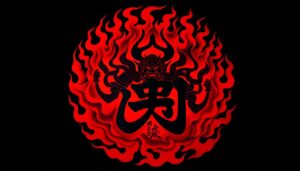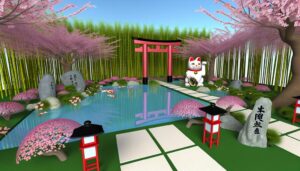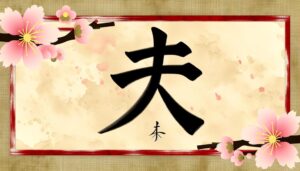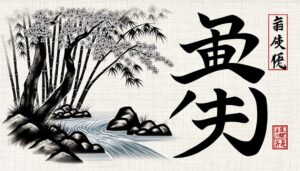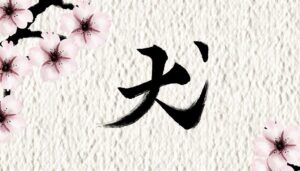How to Draw the Japanese Symbol for Jiu Jitsu
The Japanese symbol for Jiu Jitsu is represented by the kanji 柔術, consisting of two characters: 柔 (Jū) meaning 'gentle' and 術 (Jutsu) meaning 'art' or 'technique.' Originating in the classical era, Jiu Jitsu was developed by the samurai to address the necessity for unarmed combat techniques. The art promotes using an opponent's force against them, emphasizing skillful and strategic practice.
Rooted in Bushido and connected to philosophical principles like flexibility and cooperation, Jiu Jitsu is more than a martial practice; it deeply influences Japanese culture and values. Explore further to uncover its rich historical and cultural significance.
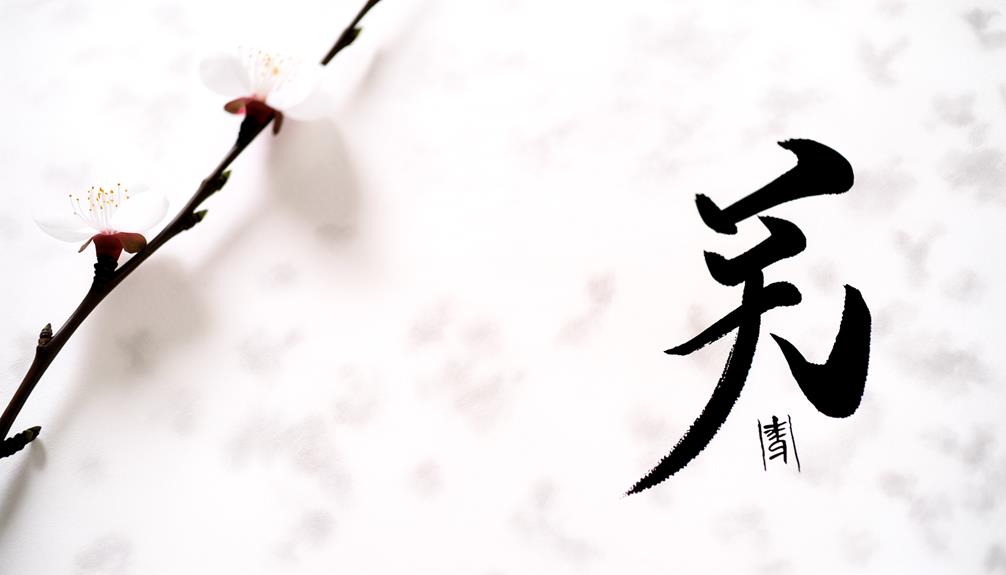
Key Takeaways
- The Japanese symbol for Jiu Jitsu is represented by the kanji 柔術 (Jūjutsu).
- The kanji 柔 (Jū) means 'gentle' or 'yielding,' reflecting the principle of using an opponent's force.
- The kanji 術 (Jutsu) means 'art' or 'technique,' emphasizing skill and strategy in combat.
- Combined, 柔術 (Jūjutsu) translates to 'the art of gentleness' in martial practice.
- Jūjutsu's kanji highlights the importance of flexibility, efficiency, and strategic combat.
Historical Origins
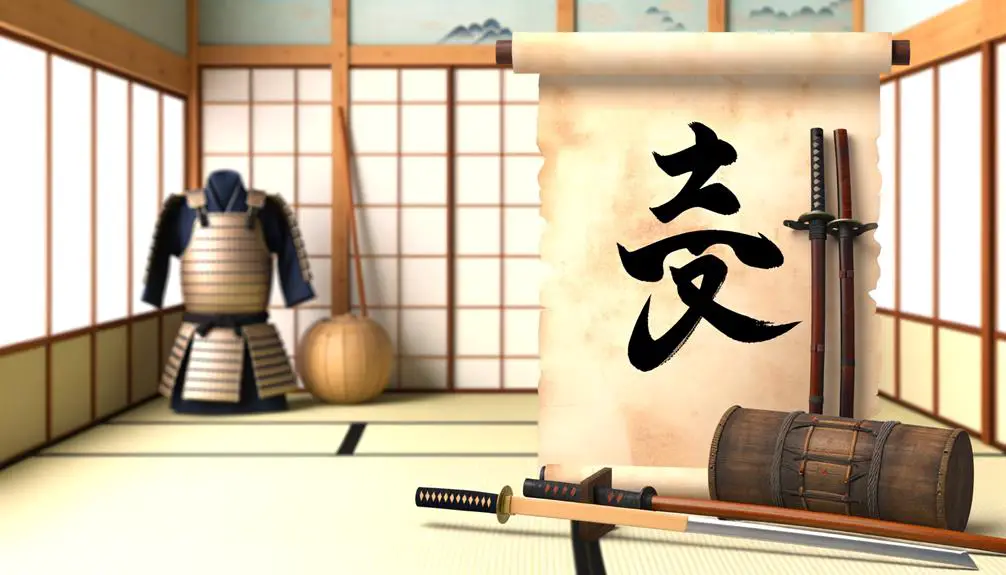
The historical origins of the Japanese symbol for Jiu Jitsu can be traced back to the classical era of Japan, where martial arts traditions were deeply intertwined with the samurai culture and the philosophical principles of Bushido.
Jiu Jitsu, or 'gentle art,' emerged as a response to the evolving battlefield conditions, where unarmed combat techniques became essential. The samurai, who were the warrior class, developed and refined these techniques as part of their all-encompassing martial training.
Jiu Jitsu encompassed throws, joint locks, and strikes, emphasizing leverage and technique over brute strength. The codification of these methods contributed to the formation of a distinct symbol that represented not only the techniques but also the philosophical aspects of discipline, respect, and resilience inherent in samurai ethos.
Kanji and Its Meaning
Rooted in this rich historical context, the Japanese symbol for Jiu Jitsu is represented by the kanji 柔術, which encapsulates the art's fundamental principles and techniques.
The kanji consists of two characters:
- 柔 (Jū): This character signifies 'gentle' or 'yielding,' embodying the philosophy of using an opponent's force against them rather than opposing it directly.
- 術 (Jutsu): This character means 'art' or 'technique,' highlighting the skillful and strategic nature of the practice.
- Combination: Together, 柔術 (Jūjutsu) conveys the concept of 'the art of gentleness,' where practitioners leverage technique and adaptability over brute strength.
This kanji succinctly captures the essence of Jiu Jitsu, reflecting its nuanced approach to combat and self-defense.
Cultural Significance
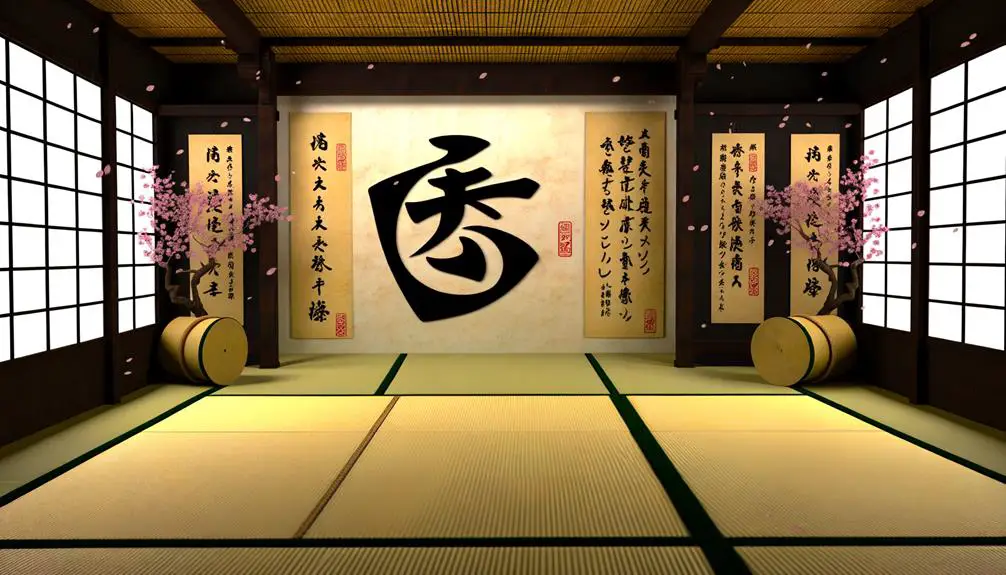
Examining the cultural significance of Jiu Jitsu unveils its profound impact on Japanese society, extending beyond martial arts to influence various aspects of daily life, philosophy, and social interactions.
Historically, Jiu Jitsu emerged during the feudal era, aligning with the samurai class's need for unarmed combat techniques. Its principles of flexibility, efficiency, and adaptability have permeated Japanese cultural values, emphasizing resilience and harmonious living.
Additionally, Jiu Jitsu's practice fosters a sense of community and mutual respect, reflecting Japan's social hierarchies and collective ethos. The art's rituals and disciplined training have also contributed to the Japanese educational system, reinforcing mindfulness, perseverance, and discipline.
Therefore, Jiu Jitsu serves as a conduit for cultural transmission and societal cohesion.
Philosophical Insights
Delving into the philosophical insights of Jiu Jitsu reveals a complex interplay between physical technique and mental discipline, reflecting profound Eastern philosophies that prioritize balance, harmony, and the mastery of the self. Rooted in ancient Japanese traditions, Jiu Jitsu embodies the following key philosophical principles:
- Ju (柔): The concept of yielding or flexibility, which emphasizes the importance of adapting to one's opponent rather than confronting them directly.
- Jita Kyoei (自他共栄): Mutual welfare and benefit, underscoring the significance of cooperation and mutual respect.
- Seiryoku Zenyo (精力善用): Maximum efficiency with minimum effort, advocating for the most efficient use of energy and resources.
These tenets not only shape the practice of Jiu Jitsu but also offer profound life lessons that transcend the martial arts context.
Modern Interpretations
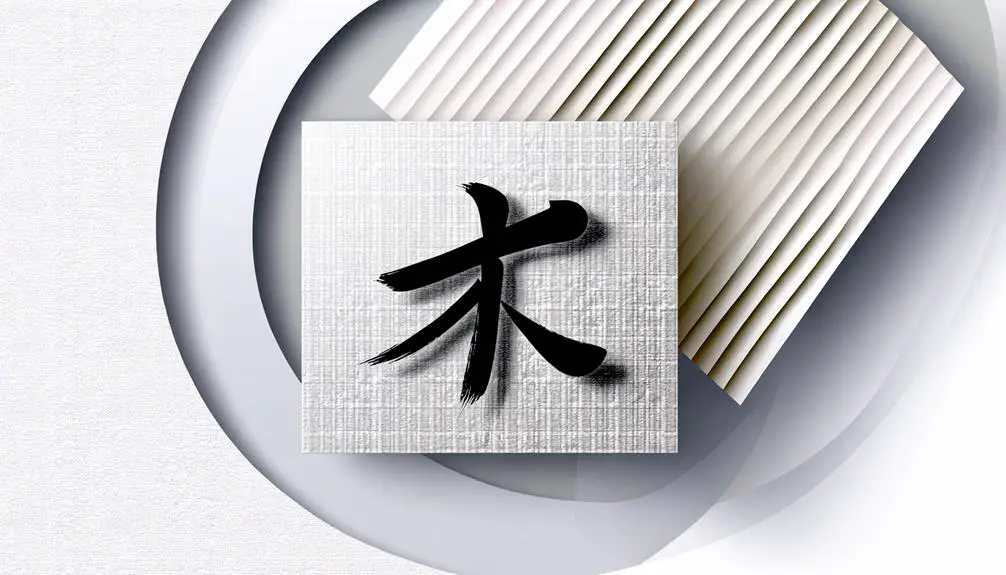
Building upon the foundational principles rooted in ancient traditions, modern interpretations of Jiu Jitsu integrate contemporary training methodologies and cross-disciplinary influences to enhance both its practical application and philosophical depth.
Today's practitioners often incorporate elements from sports science, psychology, and other martial arts to refine techniques and optimize performance. The adoption of mixed martial arts (MMA) has also led to a more holistic understanding of combat, blending striking and grappling.
Moreover, advancements in biomechanics and kinesiology provide insights into body mechanics, improving efficiency and reducing injury. These modern adaptations preserve the core essence of Jiu Jitsu while making it relevant to contemporary practitioners, ensuring its evolution without compromising its rich historical heritage.
Conclusion
The Japanese symbol for jiu-jitsu embodies a rich tapestry of historical origins, profound kanji meanings, and significant cultural value. Rooted in ancient samurai traditions, it transcends mere martial technique to encompass philosophical wisdom and ethical principles.
From feudal Japan to modern practice, this symbol remains a powerful emblem of resilience, adaptability, and harmony. Its enduring relevance, akin to a timeless algorithm, underscores the dynamic interplay between tradition and contemporary interpretation within the martial arts community.

